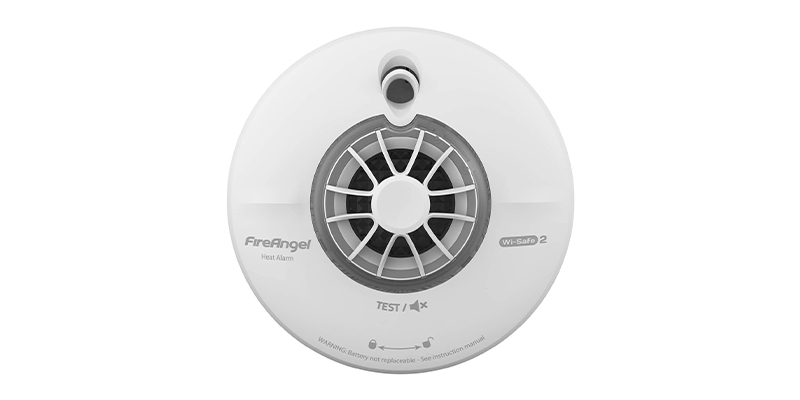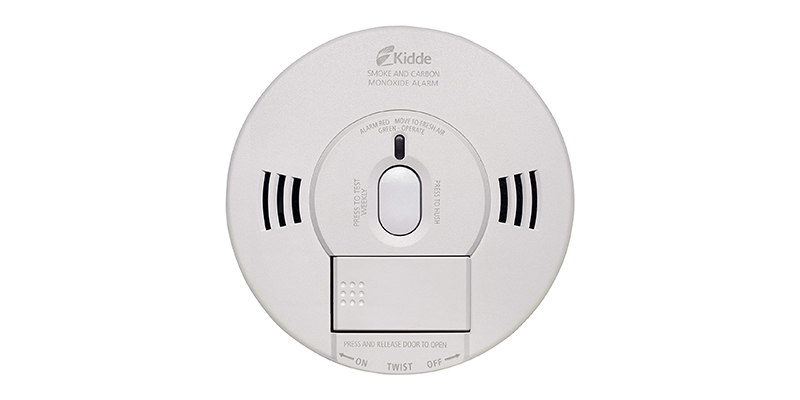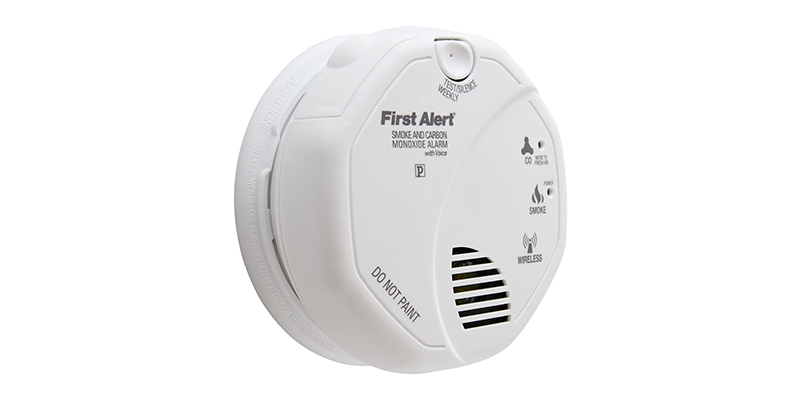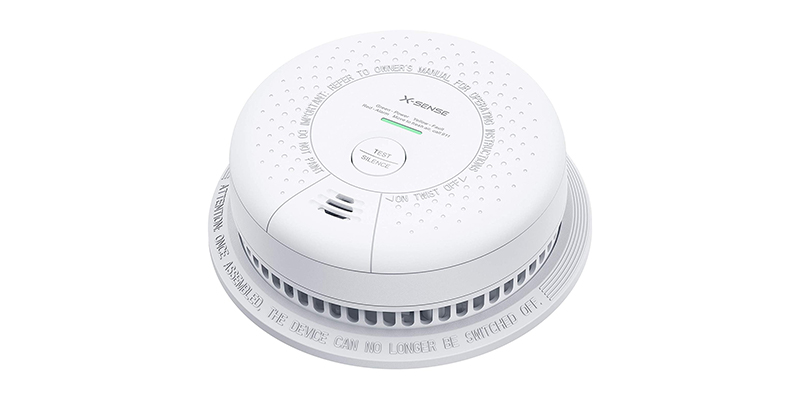Once installed, the best smoke alarms are usually out of sight until they do something to attract our attention (like start beeping or chirping).
Still, while we tend to forget about the smoke alarm system in our home, these devices are constantly watching for any threats that could have disastrous results.
The best smoke detector is more than just a silent guardian that keeps looking out for the home’s safety.
It is also capable of establishing connections with other smoke alarms or other devices in the house and taking preventive measures (like cutting off the gas or shutting off the boiler) to reduce the damage if an accident does happen.
As such, it’s important to make sure you choose the best smoke alarm system for your needs and establishment.
For this, we did a few smoke alarm reviews and had a chat with a few fire experts who provided useful guidance for our buying guide (make sure to check that as well).
See Our Top Smoke Detectors
| # | PREVIEW | Product | |
|---|---|---|---|
| 1
Best For Higher Budgets
1Google Nest Protect Smoke Alarm
|

|
|
|
|
|
|||
| 2 |
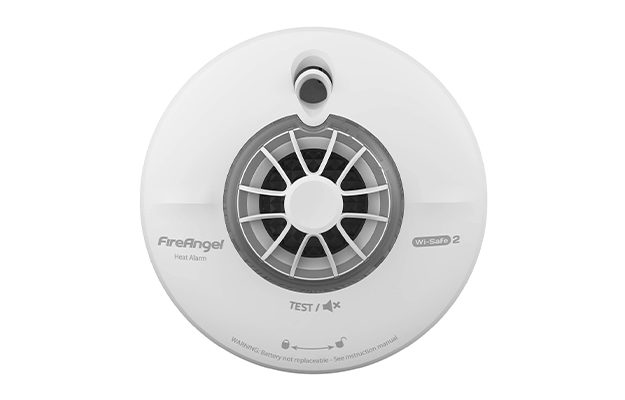
|
|
|
|
|
|||
| 3
Best Overall
3Kidde 10SCO Smoke & Carbon Monoxide Alarm
|
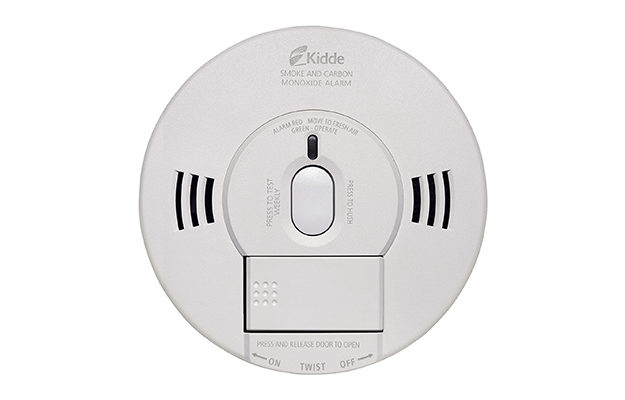
|
|
|
|
|
|||
| 4
Best For Low Budgets
4Aico EI141RC Ionisation Smoke Alarm
|
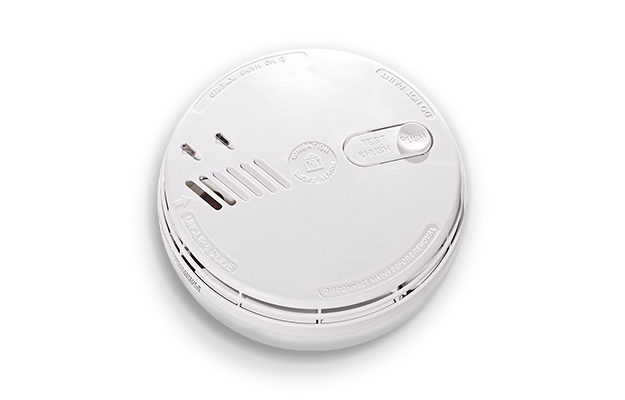
|
|
|
|
|
|||
| 5 |
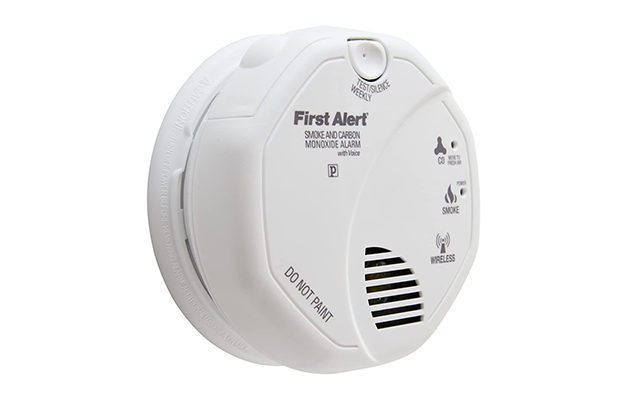
|
|
|
|
|
|||
| 6 |
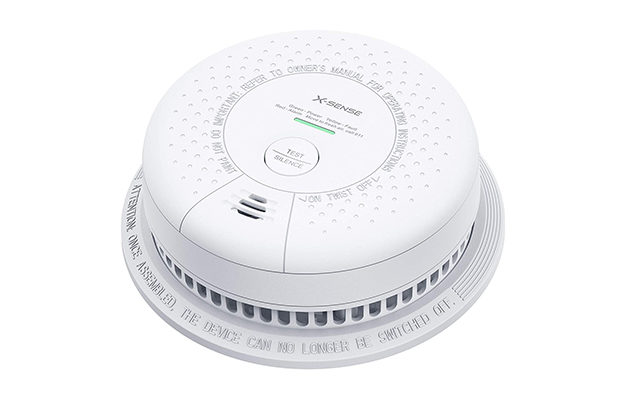
|
|
|
|
|
|||
1. Google Nest Protect Smoke Alarm
- Detects smoke and Carbon Monoxide
- Voice alarm to the user’s phone
- Designed to detect fast- and slow-burning fires
- Can be silenced from the phone app
The Google Nest 2nd Generation smoke alarm wired design is easy to install (though it may take a bit more work since there is no room in the back of the housing to hide the wire).
It’s also easy to set and control, and once everything is in order, it puts your mind at ease.
The device is equipped with a Split-Spectrum sensor, an electrochemical carbon monoxide sensor, a heat sensor, a humidity sensor, an occupancy sensor (120º field of view to 20 feet), and an omnidirectional microphone paired with a speaker.
The siren can produce up to 85 dB sound power, and the LED ring can produce RGB colors for visual warning.
The alarm can detect both fast-and-slow-burning fires and it also warns users in case of carbon monoxide intoxication.
Furthermore, you can use the Nest app to silence the alarm or stay up to date with your house’s status even when you’re away.
It also notifies you when the battery goes low or if there is some sensor failure.
Lastly, the device runs routine tests (to identify any problems) and can connect with other Nest devices in the house, working together to prevent unfortunate accidents.
Specifications
Pros
- Easy to install and connect
- Can be controlled using the phone App
- Various alarms directly on the phone
- Can be connected with other similar devices
Cons
- No housing space for the wire
- You need to get the wire right in the connector blocks the first time
2. FireAngel WHT-630Q Radio-Interlink Heat Alarm
- Up to 50 alarms interlinked together
- Certified to BS 5446-2
- Can be used anywhere in the house
- Battery-powered
This smoke alarm is compact, durable, and very easy to install.
It’s also equipped with a long-lasting internal battery that doesn’t need your attention during the specified lifespan (or at least most of it).
Since each device can be wirelessly interlinked with up to 50 others, it’s easy to cover the safety of a large home, from top to bottom.
Once one alarm is activated, they will go on, using a pattern that specifies the emergency (heat, carbon monoxide, or smoke).
In addition, it’s easy to identify the source, as you can silence all alarms but the initiating one.
These alarms are fitted with Thermistek technology (it constantly monitors for an increase in the rate of temperature change), which allows them to react two times faster than other conventional heat alarms.
This is why they are best installed in the kitchen, where a large majority of house fires begin.
Specifications
Pros
- No wires (works on batteries)
- Equipped with Thermistek heat sensing technology
- Easy to locate the initiating alarm
- Specific warning pattern for different alarms
Cons
- The battery isn’t removable and can’t be recharged
- Battery life span is usually not as long as the producer claims
3. Kidde 10SCO Smoke & Carbon Monoxide Alarm
- Detects both smoke and carbon monoxide
- Can be mounted on the wall or ceiling
- It is battery-powered
- Voice warnings for each specific threat
This is a battery-powered unit with a compact design that easily fits in most places (even narrow locations).
It is also fitted with sensors that can detect both smoke and carbon monoxide, and the voice alarm feature lets you know which threat has been detected.
The alarm is loud and the unit is equipped with peak level memory to store information about all the alarms that were triggered through time.
In addition, the battery is easy to replace (it uses a 9v battery), due to the loading compartment placed at the front.
It is very easy to install (on the ceiling or wall) and it’s just as easy to test.
Specifications
Pros
- No wires to worry about during the installation
- Easy to mount even in narrow locations
- Voice warnings that let you know about the threat
- Hush & test buttons
Cons
- Some models may issue false alarms
4. Aico EI141RC Ionisation Smoke Alarm
- The base has several mounting patterns
- Built-in Test / Hush button
- Can be interlinked with other units (wired)
- Lightweight and compact
An easy to use and compact smoke alarm that comes with a 9V alkaline battery backup.
It is extremely easy to mount due to the base that is designed with several mounting patterns and doesn’t stand out much.
In addition, it can be interlinked with other 20 smoke alarms, that all start sounding if one is activated.
The built-in Test/Hush button allows users to make sure everything is still going well, and the memory function lets you know about the previous times an alarm has been activated.
Overall, this unit is reliable and sturdy, but it’s also simple in its use (it truly is just a smoke alarm, nothing more).
Specifications
Pros
- Easy to mount over old mounting holes
- The interface is simple and easy to understand
- The batteries are easy to replace
- Can be interlinked with other 20 alarms
Cons
- Does not detect carbon monoxide
- Quite bulky
5. First Alert Wireless Photoelectric Smoke Alarm
- Smoke and carbon monoxide alarm
- Wireless design (uses radio frequency communication)
- Connects multiple alarms together
- Voice alarm that specifies the threat
This unit uses photoelectric smoke detection (has photoelectric and electrochemical sensor types) which makes it a bit more efficient than the other types.
It’s also durable and compact, and has voice warnings so people can tell the type of threat they’re facing and where in the house it is located.
Besides the voice warning, the unit is equipped with a loud siren (85 dB) that will wake up even the soundest sleepers.
In addition, it can connect with other alarms in the house, creating a safety network, and updating each other on the status of different parts of the house.
Lastly, the unit is easy to mount (no wires involved) and the batteries are rather easy to change (it also has low battery and end-of-life warning patterns).
Specifications
Pros
- Easy to install (no wires needed)
- Can communicate with other alarms
- Low battery & end-of-life warnings
- Protects against both smoke and CO poisoning
Cons
- Printed instructions are not very accurate
- The range is a bit limited
6. X-Sense SD03 Battery Smoke Detector Alarm
- Fitted with one of the most advanced photoelectric sensors
- Minimized the number of false alarms
- LED light for additional notification
- Approved by the ETL
Designed to provide the best experience while guarding your safety, the X-Sense fire alarm uses one of the most advanced photoelectric sensors on the market.
Furthermore, it manages to reduce the number of false alarms by first taking three separate smoke samples from the surrounding air (before it sends an alert).
The alarm reacts quickly, whether we’re talking about a slow-burning fire or one that can get bigger faster.
It also has a long battery life (up to 10 years) and a self-check function so you won’t have to run weekly manual tests that also try your hearing (the siren is 85dB loud).
Besides the blaring sound, the unit uses a 3-color LED light (red, green, yellow). This way, even those with impaired hearing can check the alarm’s status.
Lastly, you don’t have to worry about the unit reaching end-of-life without you noticing – you will be notified by a specific type of warning when the time comes.
Specifications
Pros
- Easy to mount
- 10-year battery life
- Detects both small burning and smoldering fires
- Photoelectric sensor
Cons
- The mounting plate is a bit difficult
- The green flash is very bright at night
Smoke Alarm Buying Guide
Types Of Smoke Alarms
The main difference between smoke alarms is in the type of sensor they use to detect smoke or carbon monoxide (or both).
Modern units tend to use three types of sensors:
- Photoelectric
- Ionisation
- Split spectrum
As such, we will have a look at each sensor type and highlight the differences, so it’s easier to understand whether you need a split spectrum, ionisation, or optical smoke alarm.
Photoelectric Sensor
A photoelectric smoke alarm sensor is not very sensitive to small particles, but they react quickly when it comes to smoldering fires that don’t have any visible flames.
This means there will be far fewer false alarms than with an ionisation sensor.
However, they can be triggered by a dust buildup, so it’s important to keep them clean.
Ionisation Sensor
Alarms that use an ionisation sensor are amazing at detecting fast fires (or the possibility of such an incident).
The sensor is very sensitive and detects small particles, which is why they are very efficient.
However, there’s a downside, especially if you have one installed in the kitchen.
The sensor can be easily triggered by burnt food or even steam from the shower, so you may get plenty of false alarms.
Split Spectrum Sensor
There are some units that use both photoelectric and ionisation sensors, but these are less common in simple units.
This type of smoke alarm uses both technologies, which may create a superior unit, but it depends on the situation.
Battery Or Hard Wired
When it comes to the power source, most smoke alarm units fit under one of two categories: wired and wireless (or battery-powered).
Both designs are efficient, so it’s important to know that the wired smoke alarm usually takes a bit more time and work during the installation.
However, once this step is over, you don’t have to worry about that low-battery chirp so many homeowners already know.
Hard-wired smoke alarms are connected to the house’s electrical system so there is no need to worry about batteries. Still, you may want a design with battery backup, in case there’s a power outage.
Lastly, battery-powered units are very easy to install and don’t require any extra maintenance.
Smart Smoke Detectors
Units like the ones from the Google Nest series are equipped with smart technology that can communicate with a user’s phone.
In addition, this type of smoke alarm can communicate with other Nest devices in the house, which means it can prevent a fire from happening while sounding the alarm.
Even more, smart smoke detectors are designed to tell the difference between shower steam and real danger.
And, while there may be a few false alarms from time to time, it doesn’t compare with the standard smoke alarm units.
Features
In this section, we will mention some of the features that matter when selecting the best smoke detectors in your house.
Carbon Monoxide Detection
As you can see from our reviews, some units also have carbon monoxide detection.
This is not a standard feature, so make sure to check the specifications before buying any product.
Since carbon monoxide can accumulate around gas-powered boilers that are not properly ventilated, a CO detector can save your life!
Light
Some units are also equipped with LED lights (usually supporting RGB colors) in order to offer visual warnings as well as audible ones.
A smoke alarm with light is the perfect option for audio impaired people but it’s also a great option for regular households as well.
Portability
While all smoke alarm units designed for home use are compact and have a slim profile, not all of them are portable.
In fact, a portable smoke alarm device needs to be battery-powered (whether it’s a built-in battery or one that can be changed).
Wireless
A Wifi smoke detector can wirelessly communicate with other devices, including your phone.
As such, you can receive regular updates on the state of your home while you’re away, which is quite an important feature.
Pricing Range
Depending on the type of sensor and the technology inside the unit, the price can vary considerably.
For instance, if you check our reviews, you’ll find units that only cost about $10 to $20 per piece, but there are also units that cost around $100.
So, it’s important to know your priorities and the size of the space you want to safeguard.
Frequently Asked Questions

The process of detecting fires is different according to the type of sensor:
- Ionization sensors use a small amount of radioactive material between two electrically charged plates to ionize the air between the plates. If smoke enters the chamber, the flow of ions is disrupted, which in turn activates the alarm.
- Photoelectric sensors use a light source into a sensing chamber. If smoke enters the chamber, the light will be reflected onto the sensor, thus triggering the alarm.
- A split spectrum sensor will use both technologies.
Our Verdict
Smoke alarms are important for the safety of your home, so they are a must-have. However, it takes a bit of research to understand which model suits your needs the best.
For instance, if you have a large home, you will want interlinked units that can communicate with each other.
On the other hand, if you want to keep an eye on your home’s safety even when you’re away, you may be better with a few smart units that can send regular reports and alerts.
In the end, the choice you make will stick with you for at least a few years (many units are designed to last about 10 years), so it’s crucial that you do thorough research.
Start by reading our reviews and don’t forget about the buying guide – it is very helpful!


